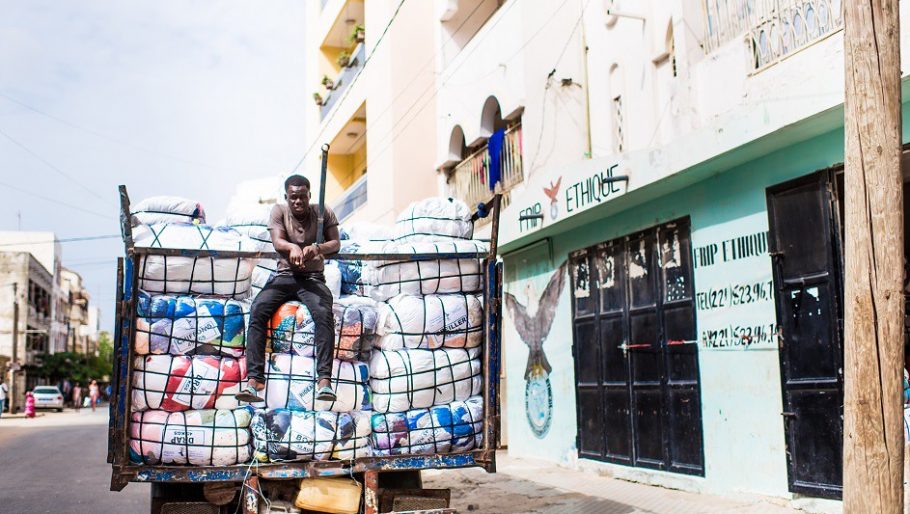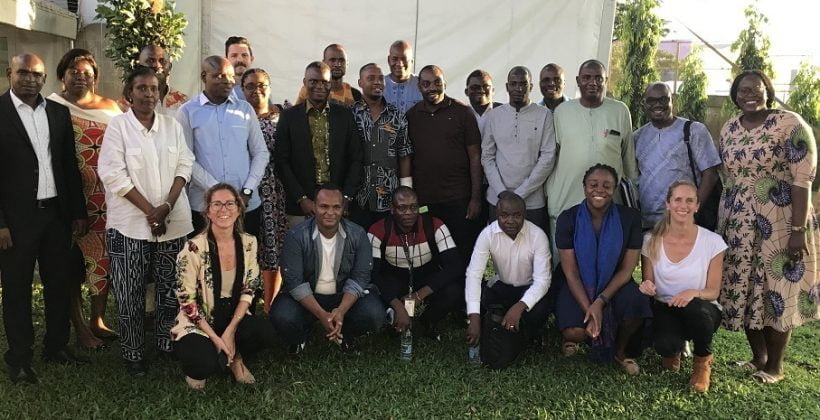CVA and Risks: What happens in the field, stays in the field?

In October 2019 in Douala, Cameroon, the CALP Network facilitated a learning event exploring the risks to beneficiary protection in Cash and Voucher Assistance (CVA). This closed-door workshop, held as part of series of meetings and webinars on theme of CVA and risk in different regions, convened 25 humanitarian workers from West and Central Africa representing local and international NGOs, UN Agencies, and the Red Cross Red Crescent movement, to share their experiences and recommendations for the region, available at the end of this page.
The meeting was a stark reminder of the extremely difficult situations in which humanitarian workers operate in West and Central Africa. Participants shared experiences of aid recipients exposed to extreme violence, in some cases generated or amplified by humanitarian interventions. This reality reminds us that risks are diverse, frequent, multidimensional: Nigeria, CAR and DRC are among the most dangerous countries to work in for humanitarian workers [1], and the region also faces an increase in civilians becoming direct or indirect targets of major incidents [2].
The risks that were discussed in our workshop can be divided into three categories: contextual, organizational and human. All can be anticipated and/or mitigated by timely or structural measures that will limit their impact or occurrence.

Among organizational risks – those for which we can find some commonalities across contexts – participants highlighted the disconnect between those who know and those who do. Within organizations, between HQs and country offices, national and sub-national offices, most programmatic decisions (but also contracts with Financial Service Providers (FSPs) and negotiations with donors) are dealt with by experienced individuals who have time to access knowledge and best practice tools, but have little direct access to operational contexts. Those decisions are then implemented by overwhelmed teams, under pressure, who (due to time, capacity or logistical barriers) have no access to available resources and trainings. This disconnect directly impacts their ability to implement CVA in an optimal way, with respect to humanitarian principles and beneficiaries’ protection. It also prevents them from communicating effectively with all the stakeholders (FSPs, beneficiaries, local authorities) and to sensitize them to those principles.
Indeed, CVA comes with specific risks and can exacerbate others, but the modality mostly suffers from a large range of overall weaknesses within the humanitarian system. We must avoid blaming CVA for what it only highlights. The risk aversion and extensive control measures that are being applied to CVA do make the risks of fraud and protection more visible. This is positive, and we must work to address these risks through the humanitarian system rather than assuming that another modality would then be less risky – as in-kind distributions come with specific risks too.
Until we apply the same analysis and control measures to CVA and in-kind distributions, we won’t have comparable evidence on the risks associated with the different assistance modalities, particularly with regards to targeting, impact on social cohesion, fraud and diversion, and tensions between stakeholders (such as staff, local authorities, armed groups, and beneficiaries). And without this comparative analysis we risk making misguided programmatic design decisions – and exposing our beneficiaries to further risks.
“We don’t know who is who. Individuals who are not in favour of peace infiltrate communities, and have a direct interest in undermining assistance or taking us back to in-kind.”
Some participants shared experiences of how armed groups control in-kind assistance, which is easy to tax and divert just by adding check points, and can feed networks and militias by becoming the base of their economy. Those groups have a well-understood interest in undermining CVA, including through violent means, threats on CVA beneficiaries, and the use of fake cultural or religious arguments to declare this type of assistance inappropriate and promote moving back to in-kind.
Threats against beneficiaries and staff, generalized mistrust and insecurity in these fragile contexts require urgent attention. The circulation of information among communities and with armed groups is hard to track, and it’s not humanitarian organizations’ work to do so. But in these circumstances, humanitarian actors face a very tough dilemma, torn between the necessity of providing aid, preserving all stakeholders’ security, and avoiding indirect support to armed groups.
“Sometimes we use intermediaries, even though we know it’s not the best way.”
In such conditions, there are no ‘ready-to-use’ solutions. However, the experiences of these tensions identified by participants in Douala may provide a useful reference for actors working in similar situations. Participants discussed:
- Negotiating access and the continuity of aid often requires intermediaries, but each intermediary itself increases the risk of abuse of beneficiaries.
- Diversifying Financial Service Providers (FSPs) can help address this issue of abuse, provided that humanitarian agencies have the necessary resources to closely manage the relationship with these FSPs.
- Delegating responsibilities to FSPs with expertise can ensure quicker and more transparent assistance delivery, but can also disconnect the humanitarian organization from the beneficiaries – and may give FSP agents too much power without them being properly accountable to beneficiaries.
- How to define the ‘effectiveness’ of the complaint mechanism. Is it a complaint mechanism which is most accessible by the beneficiary or one that allows most responsiveness from the humanitarian organization?
Knowing that mitigation measures for different risks can contradict or cancel one another out, the question driving programmatic decision making should be around where to place emphasis in my specific context. There must be consistent, integrated, contextualized risk analysis, accompanied by lessons learnt, and an understanding of their impact and frequency, to identify the most pressing risks and inform programme decision-making.
It’s time to switch from a competitive mindset between organizations to a new approach that is open to sharing experiences and expertise. The real risks that apply to humanitarian aid in general and CVA in particular cannot remain the prerogative of those who do, brushed aside in competition for access to limited funding; nor should organizations setting up presence in a context where other actors already operate have to expose their staff and beneficiaries to risks that others have already found ways to mitigate. Donors have a key role to play in encouraging and promoting learning and transparency, if appropriate space and enabling fora are created to do so. The CALP Network at global and regional levels and Cash Working Groups at the national level will continue to play their part, facilitating this critical dialogue, making tools available to all and working tirelessly to reduce the gap between those who design, and those who implement.
1 Stoddard, A., Harvey, P., Czwarno, M., & Breckenridge, M. (2019). Aid Worker Security Report 2019
2 OCHA
Main image: Rachel Manns/Oxfam